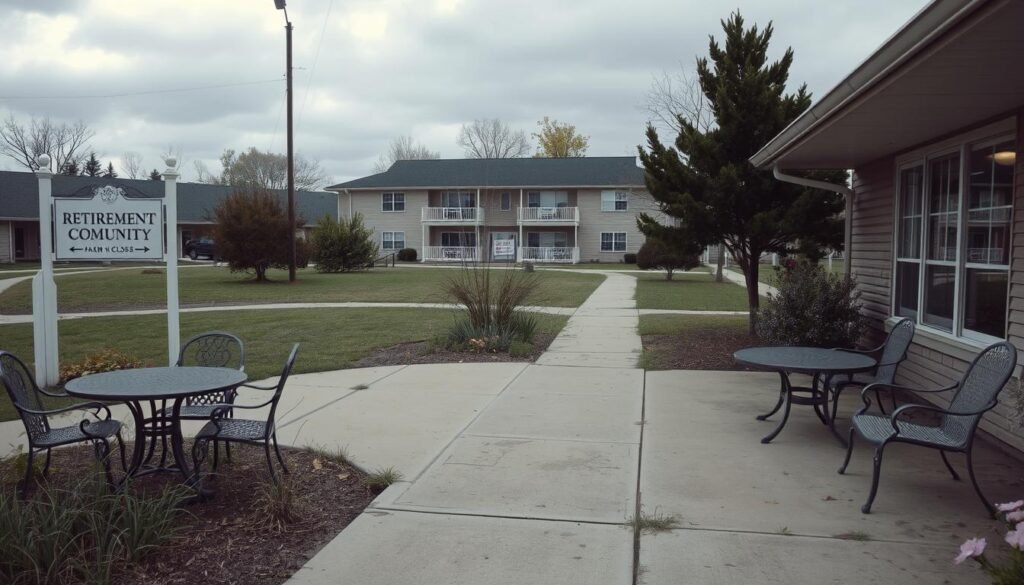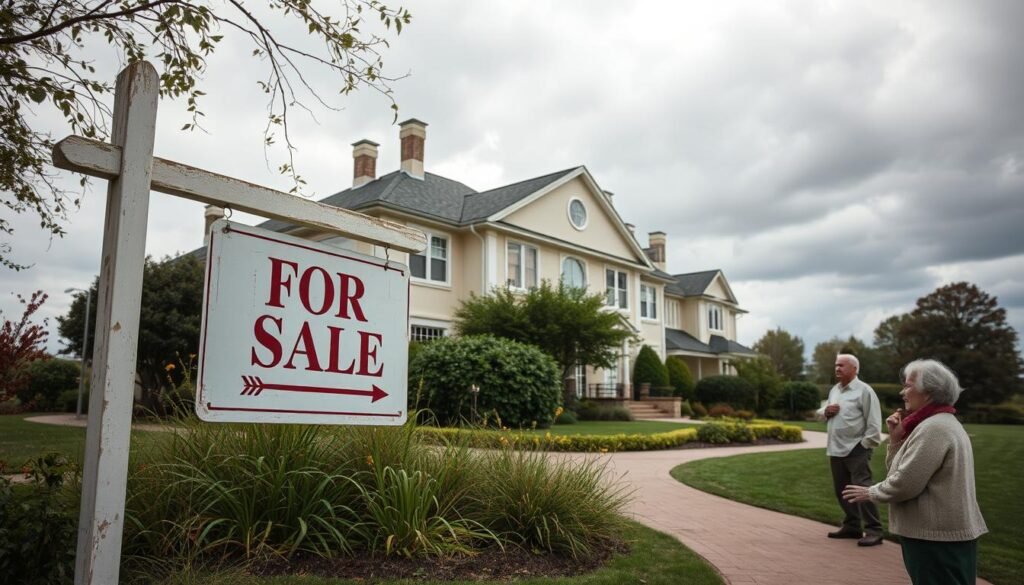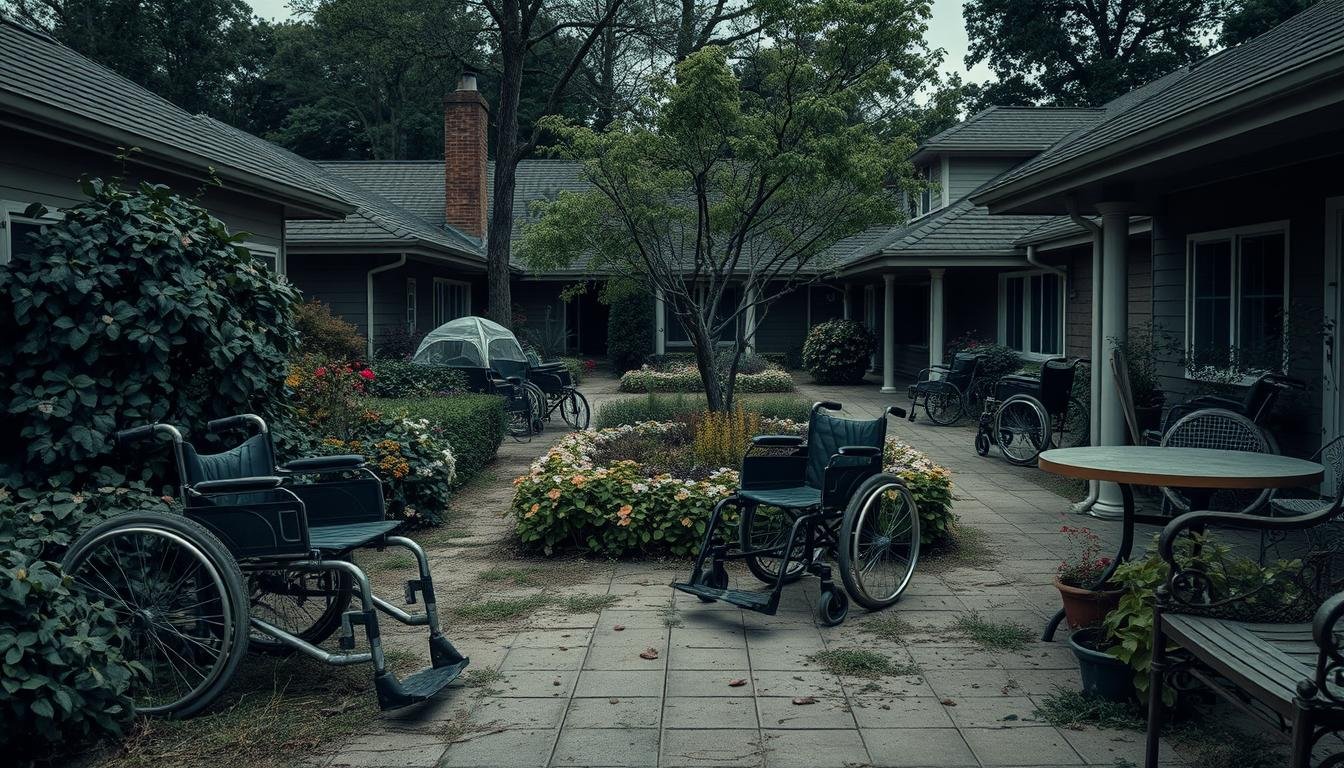The sudden bankruptcy of a retirement community sends shockwaves through residents’ lives, uprooting seniors from their homes and shattering their sense of security. As economic pressures mount across the senior living industry, facilities nationwide face a perfect storm of rising operational costs, staffing shortages, and reduced occupancy rates. These financial struggles don’t just appear as numbers on a balance sheet—they represent real threats to the stability, healthcare, and dignity of elderly residents who plan to spend their final years in these communities.
Key Takeaways
- When a retirement community goes bankrupt, residents may face significant financial losses.
- The senior living financial crisis has affected many communities, resulting in implications of retirement community bankruptcy.
- Understanding the signs and causes of financial distress is crucial for residents and their families.
- Residents have rights and interests that must be protected during the bankruptcy process.
- Open communication and dialogue with management and staff are essential during this time.
- Residents should be aware of their contract terms and the options available to them.
- Seeking professional help and advice is recommended to navigate the complex process of retirement community bankruptcy.
Understanding When a Retirement Community Goes Bankrupt
Bankruptcy in the senior living industry is complex and tough for residents. They have invested their life savings in these communities. It’s vital to protect residents in bankrupt retirement communities to ensure their well-being and financial security. Financial troubles in retirement communities can come from many sources, like fewer patients, not enough staff, and higher costs.
About 1,900 Continuing Care Retirement Communities (CCRCs) house around 900,000 Americans. Entrance fees can be from $100,000 to $500,000. If a CCRC has financial problems, residents might lose their entrance fees and deposits. In some cases, they might have to move out, like the 100 residents at Unisen Senior Living in Tampa, Florida, who had to relocate when it filed for bankruptcy.
Bankruptcy in retirement communities often happens due to fewer residents, higher costs, and not following rules. CCRCs need at least 90% occupancy to stay financially stable. Also, costs in senior care facilities go up by 4-5% each year, making it hard for CCRCs that can’t keep up.
Signs of Financial Distress
- Declining occupancy rates
- Increasing operational costs
- Regulatory compliance issues
Common Causes of Retirement Community Bankruptcy
These issues can greatly affect residents. They might see changes in care and services and could lose their entrance fees and deposits. It’s key for residents to know the signs of financial trouble and the common reasons for bankruptcy to handle it well.
Initial Impact on Residents
The first effects of bankruptcy on residents can be harsh. They might lose their entrance fees and deposits and see changes in care and services. Residents also face uncertainty and worry about their future. It’s crucial to have a plan to protect their interests and well-being.
Immediate Steps to Take After Bankruptcy Announcement
When a retirement community goes bankrupt, it’s crucial to know what happens next. Understanding the consequences is key. Reviewing contracts and knowing about refund policies are important steps.
Monitoring the facility’s finances is a must. Look at financial statements to find out why the community is in trouble. Seeking legal counsel is also vital. They can help protect your rights during this tough time.
- How bankruptcy affects your living situation and care
- What your contract says about bankruptcy and your obligations
- Getting help from local resources and community groups
By taking these steps, you can better understand the situation. This helps you deal with the bankruptcy and protect your rights.
Your Legal Rights as a Retirement Community Resident
When a retirement community goes bankrupt, residents might worry about their rights. It’s important to know about retirement community bankruptcy laws. These laws help protect your assets and interests.
One big worry is protecting assets in retirement community bankruptcy. This includes entrance fees, deposits, and other payments. You might get refunds or other compensation, depending on the bankruptcy details.
It’s key to understand your contract and get legal advice. A lawyer can guide you through retirement community bankruptcy. They make sure your rights are respected.
State-Specific Protections
Some states have laws that help protect retirement community residents. These laws might require financial transparency and more.
Federal Bankruptcy Laws and Resident Rights
Federal laws also protect retirement community residents. As unsecured creditors, your ability to recover losses might be affected.
Understanding Your Contract Terms
Review your contract carefully. Knowing your obligations and rights helps you make smart decisions. It also protects your interests.
| Category | Description |
|---|---|
| Entrance Fees | Refundable or non-refundable fees paid to the community |
| Deposits | Payments made to secure a unit or services |
| Contract Terms | Agreements outlining resident obligations and rights |
Financial Considerations and Asset Protection
When a retirement community goes bankrupt, it can hit residents hard. They might ask, what happens if retirement community bankrupt. This can shake their financial security and assets.
It’s key to understand the financial fallout. For example, in Dallas, CCRCs saw their occupancy rates drop from 85% in Q1 2020 to 79.9% in Q1 2022. This can hurt a community’s finances. The average entrance fee for CCRCs in Dallas is $435,254. About 74% of CCRC independent living units in the U.S. were paid for with entrance fees.
Residents can protect their assets by:
- Reviewing their contract terms and understanding their rights
- Seeking professional advice from financial advisors
- Exploring options for asset protection, such as trusts
Residents need to know the risks and act to protect their money. By understanding the financial impact of retirement community bankruptcy and protecting their assets, they can face the challenges better. This ensures their financial security.
| CCRC Type | Average Entrance Fee | Occupancy Rate |
|---|---|---|
| Independent Living | $435,254 | 79.9% |
| Assisted Living | $200,000 – $500,000 | 70-80% |
Communication Strategies with Management and Staff
When a retirement community goes bankrupt, clear communication is key. It’s important to establish clear lines of communication with management and staff. This ensures everyone is informed and up-to-date.
Some important steps include documenting all communications and working with resident committees. Understanding what happens when a retirement community bankrupt is also crucial. These actions help residents navigate the situation and meet their needs.
Effective communication is vital in these times. It helps reduce uncertainty and anxiety among everyone involved. By being open and transparent, trust can be built. This is crucial when navigating retirement community bankruptcy, which can be complex.
Effective communication offers many benefits. For example:
- Reduced uncertainty and anxiety among residents and staff
- Improved trust and cooperation between management and staff
- Better outcomes for residents and the community as a whole
By focusing on communication and taking the right steps, everyone can work together. This helps build a stronger, more resilient community.
Options for Alternative Housing Arrangements
When a retirement community closes due to financial issues, finding new housing can be tough. The financial hit from bankruptcy is big. People might look into independent living, nursing homes, or in-home care.
Some things to think about when looking for new housing include:
- Cost: Prices vary a lot, so it’s key to think about your budget.
- Location: Staying close to family and friends is important.
- Level of care: The care you need affects your choice, with some places offering more than others.
It’s important to research and compare options. This way, you can find a place that fits your needs and situation. Understanding your choices helps you deal with the closure and find a new home.

| Alternative Housing Arrangement | Cost | Location | Level of Care |
|---|---|---|---|
| Independent Living Community | Varies | Varies | Minimal |
| Nursing Home | High | Varies | Comprehensive |
| In-Home Care Services | Varies | Home-based | Varies |
Protecting Healthcare Continuity
When a retirement community faces financial troubles, protecting its residents is key. Navigating through bankruptcy is tough, but keeping healthcare needs in check is crucial. Financial issues can mess up care routines and staff relationships, affecting residents’ health.
Keeping medical services going is a big concern. This can be done by transferring medical records to new providers. It’s also important to work closely with care teams. This ensures a smooth transition for residents.
Some key things to consider for healthcare continuity include:
- Maintaining access to medical services and care providers
- Transferring medical records to new care providers
- Communicating with residents’ families and healthcare teams
By taking these steps, residents can keep getting the care they need. Protecting them in tough financial times requires careful planning. It’s vital for their health and well-being.
Navigating retirement community bankruptcy needs a detailed plan that puts residents first. By focusing on healthcare continuity, we ensure they get the care they need, even when things get tough.
| Consideration | Importance |
|---|---|
| Maintaining medical services | High |
| Transferring medical records | High |
| Working with care providers | High |
Understanding the Bankruptcy Process Timeline
When a retirement community goes bankrupt, it’s a tough and confusing time for residents. Dealing with retirement community bankruptcy means understanding the process and timeline. Knowing what happens when a retirement community goes bankrupt is crucial.
The bankruptcy process involves many professionals like investment bankers and legal advisers. It can lead to account closures and limited credit, making payments hard. It’s important to know the key milestones and deadlines to navigate this complex process.
Here are some key points to consider when dealing with retirement community bankruptcy:
- Bankruptcy can significantly increase medical debt, with average costs exceeding $11,000 annually for those 65 and older.
- Chapter 7 bankruptcy is completed in about 4 to 6 months, whereas Chapter 13 bankruptcy spans 3 to 5 years.
- Federal law protects Social Security, disability payments, pensions, and VA benefits from being claimed during bankruptcy proceedings.

By understanding the bankruptcy process timeline and the consequences of retirement community bankruptcy, residents can better navigate this challenging situation. They can make informed decisions about their future.
| Bankruptcy Type | Timeline | Key Features |
|---|---|---|
| Chapter 7 | 4-6 months | Liquidation of assets, discharge of debts |
| Chapter 13 | 3-5 years | Reorganization of debts, repayment plan |
Working with Legal Representatives and Financial Advisors
Understanding your rights in retirement community bankruptcy is key. Legal reps and financial advisors offer crucial guidance. They help you grasp the laws and make smart choices.
It’s wise to pick experts in retirement community bankruptcy. They give precise advice on protecting your assets. While their services might cost, the benefits are worth it. They help you understand complex laws.
Selecting Professional Help
Look for advisors with experience in retirement community bankruptcies. They should know the laws well. Make sure they can explain things clearly.
Cost Considerations
The cost of advisors varies. It depends on their experience and location. Talk about fees to plan your budget.
Coordination Between Different Advisors
Good teamwork between advisors is crucial. They work together to give you a full picture. This helps you protect your assets and understand your rights.
Working with advisors gives you the support you need. They help you navigate the complex bankruptcy process. You’ll make informed decisions about your future.
| Advisor Type | Services Offered | Benefits |
|---|---|---|
| Legal Representative | Guidance on retirement community bankruptcy laws, asset protection | Expert advice, peace of mind |
| Financial Advisor | Financial planning, investment advice | Financial security, retirement planning |
Support Resources and Community Assistance
When navigating retirement community bankruptcy, knowing there’s help is key. It’s tough to understand what happens when retirement community bankrupt. But, with the right guidance, you can get through it.
Residents can find support from local Area Agencies on Aging and senior services. Online resources also offer help. They provide info on steps to take when retirement community goes bankrupt. This includes finding new homes and financial aid.
Some notable resources include:
- LeadingAge Illinois has raised concerns about the impact of new refund regulations on continuing-care retirement communities
- New Jersey’s 2018 legislation, which established a first-in/first-out refund model for CCRCs
- Online forums and support groups, where residents can connect with others who have gone through similar experiences
It’s important for residents to stay informed and seek help. This way, they can make a smoother transition. And they’ll have the support they need during this tough time.
Conclusion: Moving Forward with Confidence
The bankruptcy of a retirement community can be tough for residents. But, with the right help, you can get through it. Understanding your legal rights, protecting your financial interests, and looking into alternative housing are key steps.
The consequences of retirement community bankruptcy are big. Yet, you’re not alone. There are many resources to help you, like legal and financial advisors, and community support. By staying informed and positive, you can move forward with confidence.
Dealing with a retirement community bankruptcy shows your strength and ability to adapt. These qualities will help you as you look into new possibilities. With the right support and focus on your well-being, you’ll come out of this experience stronger and more confident.


Leave a Reply